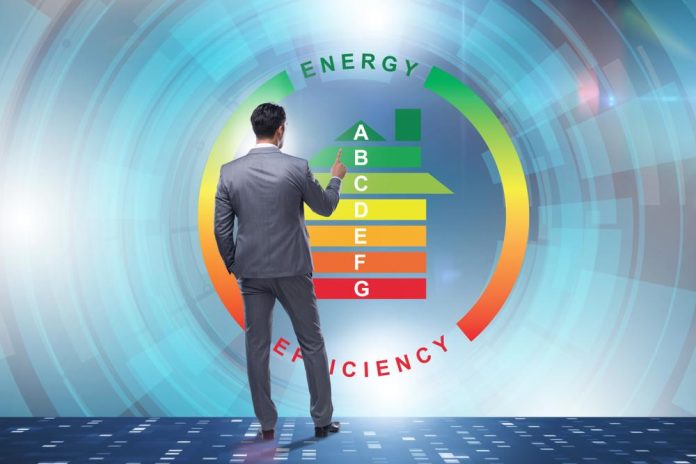In a world at the cusp of a green revolution, where every watt saved is a step closer to a sustainable tomorrow, energy efficiency emerges as our beacon of hope. It’s not just about conserving power; it’s about redefining how we power our lives.
While global agreements set the stage, it’s on the local frontlines that the real magic happens. This article is a journey through the dynamic world of state and local building energy efficiency regulations and policies—a journey that unravels the hidden threads weaving our communities into a more sustainable, energy-wise tapestry.
Understanding Energy Efficiency
Before we dive into the regulatory landscape, it’s important to understand the concept of energy efficiency. At its core, energy efficiency is about achieving more while using less energy. It encompasses a range of practices and technologies designed to reduce energy consumption without sacrificing comfort or functionality. The benefits of energy efficiency are multifaceted, spanning environmental and economic realms.
From an environmental perspective, energy efficiency helps to mitigate climate change by reducing greenhouse gas emissions. Lower energy consumption means less reliance on fossil fuels, leading to decreased air pollution and a smaller carbon footprint. On the economic front, energy-efficient buildings and appliances often result in cost savings for consumers and businesses alike. These savings can be substantial, contributing to improved financial well-being and economic resilience.
State-Level Energy Efficiency Regulations
State governments play a pivotal role in shaping energy efficiency policies. Key regulations vary from state to state, reflecting regional priorities and available resources. However, several commonalities exist across the board.
Building Codes: Many states have adopted or updated building codes that include energy efficiency standards. These codes dictate the minimum requirements for new construction or renovation projects, ensuring that buildings are designed and constructed with energy conservation in mind.
Energy Performance Standards: Some states set energy performance standards for existing buildings, requiring property owners to meet certain efficiency targets through retrofits and upgrades. These standards encourage the improvement of older structures to meet modern energy efficiency benchmarks.
Renewable Energy Mandates: Several states have implemented renewable energy portfolio standards, which mandate that a certain percentage of a state’s energy production must come from renewable sources. This not only reduces carbon emissions but also spurs investment in clean energy technologies.
Local Building Energy Efficiency Policies
While state-level regulations provide a broad framework, local governments are the ones who put these policies into action. They play a crucial role in ensuring that energy efficiency becomes a tangible reality within their communities.
Zoning Laws: Local zoning laws can encourage energy-efficient urban planning and development. By permitting mixed-use areas, promoting public transportation, and supporting green spaces, cities and counties can create more sustainable communities.
Incentive Programs: Many local governments offer incentives to encourage energy-efficient practices. These incentives may take the form of tax credits, rebates, or grants for energy-efficient upgrades and installations, making it financially attractive for individuals and businesses to invest in sustainability.
Permitting and Inspection Processes: Local governments can streamline permitting and inspection processes for energy-efficient projects, reducing bureaucratic hurdles and expediting the adoption of green technologies.
The Synergy Between State and Local Efforts
One of the most effective approaches to energy efficiency is the synergy between state and local policies. When state-level regulations align with the priorities and capabilities of local governments, the impact can be substantial. Consider the partnership between California’s ambitious state-level energy efficiency goals and the local initiatives in cities like San Francisco and Los Angeles.
Statewide mandates for renewable energy and stringent building codes have been met with enthusiasm and innovation at the local level. Cities have implemented their own ordinances, such as requiring energy audits before property sales and incentivizing solar installations, thus complementing state efforts.
Overcoming Challenges and Barriers
While state and local governments are making significant strides in energy efficiency, they face common challenges and barriers.
Funding Constraints: Implementing energy-efficient policies often requires initial investments. State and local governments must find creative funding solutions, such as public-private partnerships or dedicated revenue streams, to support these initiatives.
Resistance to Change: Change can be met with resistance, especially when it comes to regulations that impact businesses and homeowners. Effective communication and outreach are key to overcoming this challenge.
Lack of Awareness: Many individuals and businesses remain unaware of the benefits and opportunities of energy efficiency. Public education campaigns and outreach programs are essential to bridge this awareness gap.
Measuring the Impact
To truly gauge the success of energy efficiency policies, it’s crucial to measure their impact.
Quantifying Energy Savings: Robust data collection and analysis are essential to quantify energy savings and carbon emissions reductions. This data provides the evidence needed to fine-tune policies and set new targets.
Environmental Benefits: Reduced energy consumption and a shift to cleaner energy sources contribute to cleaner air, improved public health, and a more sustainable environment.
Economic Implications: Energy efficiency often leads to cost savings for both individuals and businesses, contributing to economic stability and resilience.
Future Trends and Emerging Technologies
The energy efficiency landscape is continually evolving. As technology advances, new opportunities and challenges arise.
The Evolving Landscape of Energy Efficiency: Advances in building materials, heating and cooling technologies, and smart building systems are reshaping the energy efficiency landscape.
The Role of Smart Building Technologies: The integration of sensors, automation, and data analytics is revolutionizing building management, enabling real-time energy optimization.
Potential Policy Changes and Adaptations: As our understanding of energy efficiency deepens and the urgency of addressing climate change intensifies, we can expect policy changes and adaptations at both the state and local levels.
Recommendations for Stakeholders
To drive energy efficiency forward, all stakeholders have a role to play.
Advice for Building Owners and Developers: Prioritize energy efficiency in your projects, taking advantage of available incentives and staying informed about evolving regulations.
Suggestions for State and Local Governments: Foster collaboration, support innovative financing mechanisms, and invest in public education and outreach to maximize the impact of energy efficiency policies.
Advocacy for Energy Efficiency: NGOs and communities can advocate for energy efficiency and hold governments and businesses accountable for their sustainability commitments.
Conclusion
Energy efficiency isn’t a distant goal; it’s a dynamic path we tread toward a brighter, sustainable future. State and local governments are our allies in navigating this journey, illuminating the way through regulations and policies.
As we step beyond these words, let’s remember that energy efficiency is about empowerment and leaving a lasting mark on the canvas of change. Every energy-efficient step we take brings us closer to a world where sustainability is not just a goal but a living, breathing reality. Together, we can shape a cleaner, more prosperous future for generations to come.





